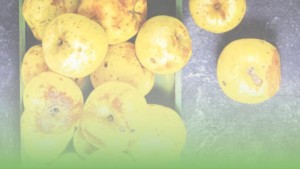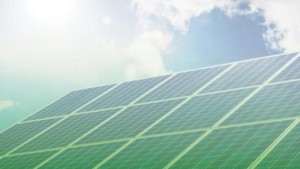By Diana Schoberg, April 8, 2019, Published in Rotary International
Rotarians are doers. Show them a problem and they look for solutions. But a global problem such as climate change might seem daunting to even the most resourceful Rotary member. Break that complex problem down into smaller pieces, however, and you find there are many things Rotarians can do — and are already doing, with help from The Rotary Foundation.
A coalition of researchers and scientists led by environmentalist and writer Paul Hawken mathematically modeled the climatic and economic impact of potential solutions to learn which ones would yield the best results for people and the planet.

Photo by RI
The list, compiled in a 2017 book called “Drawdown: The Most Comprehensive Plan Ever Proposed to Reverse Global Warming,” included some surprising possibilities, such as educating girls, promoting family planning, and assisting farmers. As it happens, all of those align with Rotary’s areas of focus. Drawdown researchers ranked solutions from 1 to 80 based on their potential to avert or reduce greenhouse gas emissions. We looked at those rankings alongside global grant projects to see how Rotarians are already helping to fight climate change.
Family planning
Drawdown ranking: 7
In lower-income countries, the Drawdown authors write, 214 million women who want more control over their pregnancies lack access to contraception, which leads to about 74 million unintended pregnancies each year. Giving women the health care they want and need also benefits the planet, reducing population growth as well as greenhouse gas emissions.

Photo by Brounat
Pregnant women who gave interviews to Rotarians in Addis Ababa, Ethiopia, said that family planning was their top priority — a sentiment echoed by their families and doctors.
This led the Rotary clubs of Finot, Ethiopia, and Darmstadt, Germany, to develop a global grant project that trained skilled birth attendants and midwives in three health centers to provide family planning counseling. Medical staff also conducted home-based counseling for 1,500 women and organized a one-day family planning workshop for 90 women who were receiving obstetric care.
Girls’ education
Drawdown ranking: 6
A woman with no schooling has four or five more children than a woman with 12 years of schooling, which means that educating girls will have a huge impact on population growth.
While the regions of the world with growing populations are often the ones with the lowest per capita carbon emissions, reducing fertility rates will still have massive benefits — not only for the planet but also in reducing intergenerational poverty. And, the Drawdown authors note, one study found that educating girls is the single most important factor in reducing vulnerability to natural disasters, which occur more frequently with the extreme weather events associated with climate change.

Photo by Ijeab
In Bosnia-Herzegovina, about 90 percent of Roma women are illiterate and less than 15 percent of Roma children go to school, leaving them vulnerable to human trafficking, among other things.
The Rotary clubs of Mostar, Bosnia and Herzegovina, and Denver, Colorado, partnered with a local nonprofit on a global grant project that mentored 80 families with at-risk girls. Twenty students from the University of Bosnia volunteered as mentors, and 15 Roma girls enrolled in school as part of the effort. Organizers estimate that at least 1,000 parents, teachers, and girls in 20 communities learned about the importance of gender equality in education through printed materials and workshops.
Regenerative agriculture
Drawdown ranking: 11
Regenerative agriculture practices include avoiding the use of plows to keep from disturbing the soil; planting a diverse array of cover crops; and limiting or abstaining from pesticides and synthetic fertilizers. These methods boost the amount of organic matter — carbon — in the soil, improving its health and that of the plants growing in it.
According to the Drawdown authors, regenerative agriculture increases organic matter in the soil between 4 percent and 7 percent over 10 years, representing an additional 25 tons to 60 tons of carbon stored in the ground per acre. That reduces the need for fertilizer — which means regenerative agriculture can help cut carbon in the atmosphere while increasing farmers’ production.
Forty people from Meihua village, Taiwan, were trained in organic farming techniques through a global grant project of the Rotary clubs of Taipei Lungmen, Taiwan, and Patumwan, Thailand.
The effort, carried out in partnership with the Organic Farming Association of Taiwan, included creating a training facility and providing internships at organic farms. Organizers expected that growing without pesticides would lower farming costs and that selling organic vegetables at a premium price would improve villagers’ earnings.
Reduced food waste
Drawdown ranking: 3
One-third of the fruits and vegetables, meat, and other food the world produces never gets eaten. Instead, it rots unharvested in fields, spoils in storage, or sits forgotten in the back of the refrigerator, only to end up in the garbage.
The production of uneaten food squanders resources such as energy, land, and fertilizer. In landfills, food waste generates methane, a greenhouse gas. From start to finish, uneaten food is responsible for releasing the equivalent of 4.4 million gigatons of carbon dioxide into the atmosphere each year, the Drawdown authors write.

Photo by Elena11
Centroabastos, a food wholesaler in Bucaramanga, Colombia, generates about 20 tons of organic solid waste per day. The Rotary clubs of Bucaramanga Nuevo Milenio, Colombia, and Woodland Hills, California, are working with the company’s nonprofit arm to set up a center that will use the surplus produce to provide training in safe food handling and processing. The project is expected to reduce food waste by 15 percent while creating employment opportunities.
Rooftop solar
Drawdown ranking: 10
The sun is an underused energy source: The Drawdown authors note that less than 2 percent of the world’s electricity is generated through solar photovoltaic panels. However, the panels have become more widely adopted over the past decade as the technology has grown more affordable.
Homeowners and power utilities are beginning to replace or supplement fossil fuels with solar panels as a source of electricity. And the more than 1 billion people in developing parts of the world who rely on kerosene lamps and diesel generators can now use affordable clean energy instead. That could make solar energy a powerful tool for eliminating poverty, even as it dramatically reduces greenhouse gas emissions.

Photo by Alexsl
In Gressier, Haiti, the power grid near the Respire Haiti Christian School is unreliable, so the school for orphans and disadvantaged children used a diesel generator to operate the pump for its well.
The Rotary clubs of Leogane, Haiti, and Parker, Colorado, led a global grant project to install a hybrid solar, diesel, and grid power system. The school saved $4,000 a year in fuel costs and reduced air and noise pollution. The hybrid system also powers interior and exterior lighting, computers, fans, and educational tools. A new water distribution system, which uses the hybrid power, and a literacy program were also part of the grant.
Tropical forests
Drawdown ranking: 5
Tropical forests once covered 12 percent of the world’s land; today, it’s 5 percent. According to the Drawdown authors, that loss accounts for up to 19 percent of the greenhouse gas emissions caused by humans.
Reforestation would enhance the planet’s ability to absorb carbon dioxide through photosynthesis while providing wildlife habitat, contributing to flood control, and conserving soil and water. But to be sustainable, the authors note, reforestation must demonstrate immediate social and economic value.

Photo by RI
The Maromizaha forest in eastern Madagascar is home to 13 species of lemurs, 77 species of birds, 60 species of amphibians, and a rich assortment of other flora and fauna. But it’s threatened by a push for new agricultural lands and a need for charcoal as fuel in nearby villages.
The Rotary clubs of Antananarivo-Tsimbaroa, Madagascar; Torino Mole Antonelliana, Italy; and Annecy Tournette, France, partnered with a local nonprofit on a project to reforest about 125 acres with native species grown from wild seed, creating jobs for area families and a tourism infrastructure. Rotarians also trained women in gardening techniques, constructed toilets, and provided 500 improved cookstoves that reduced the families’ dependence on charcoal.
Members of the Environmental Sustainability Rotarian Action Group can help your Rotary club or district plan environmental projects and publicize your efforts.

Leave A Comment
You must be logged in to post a comment.